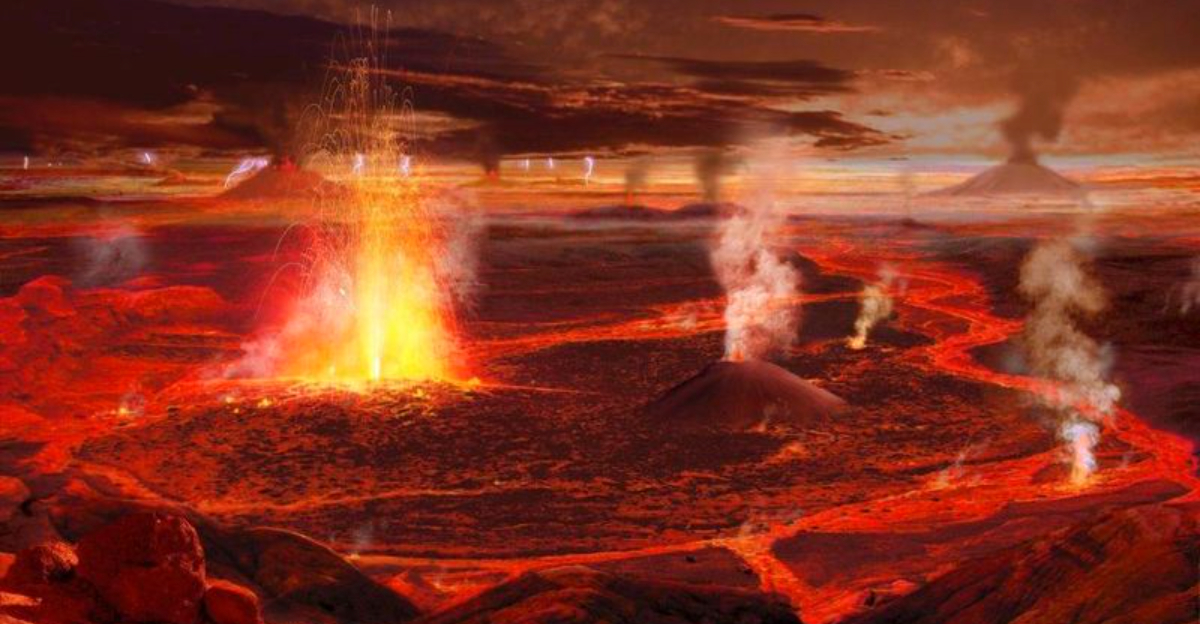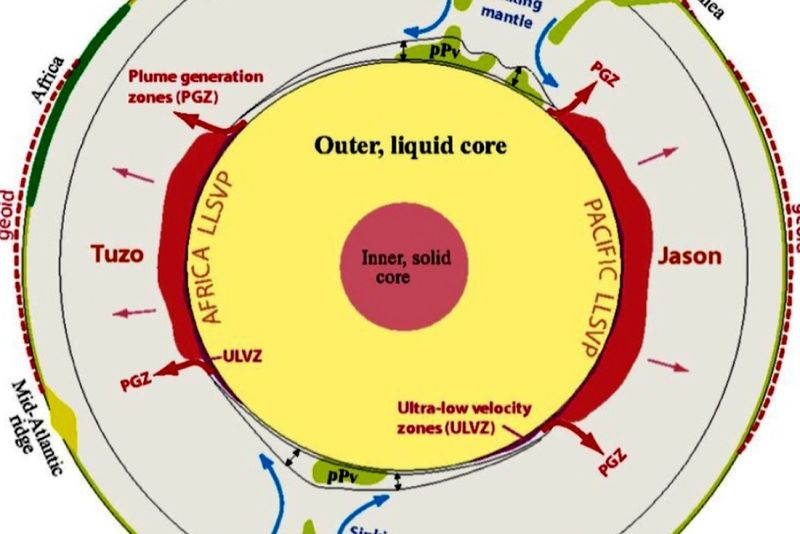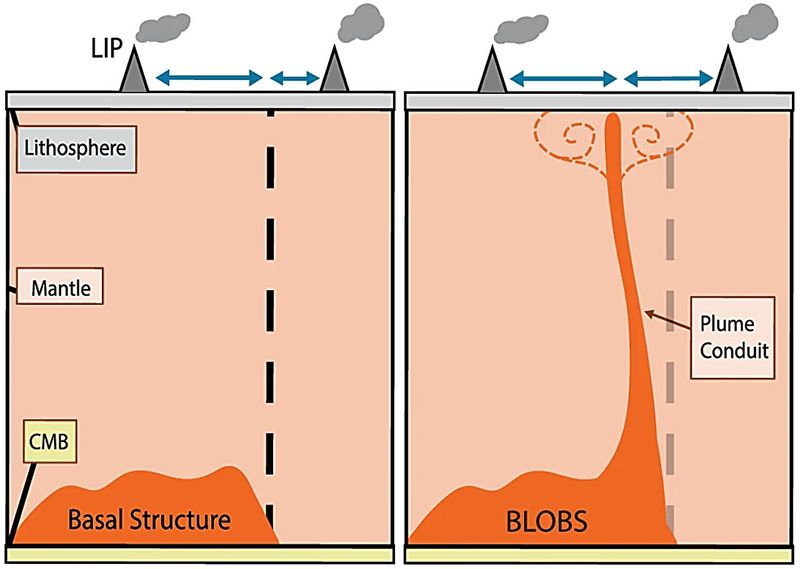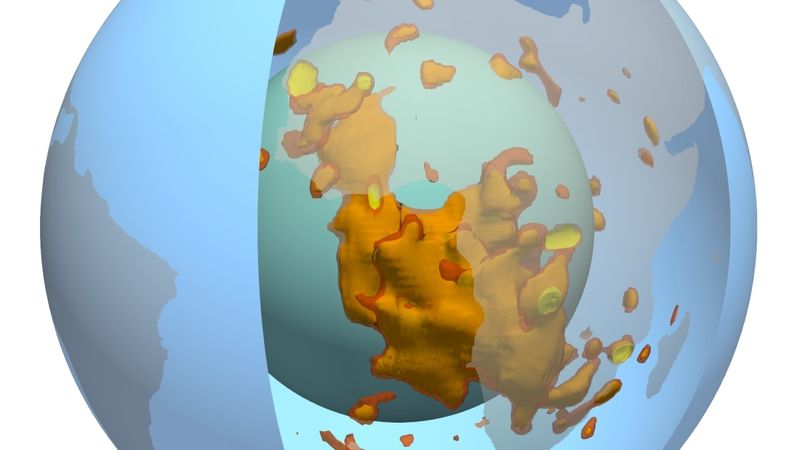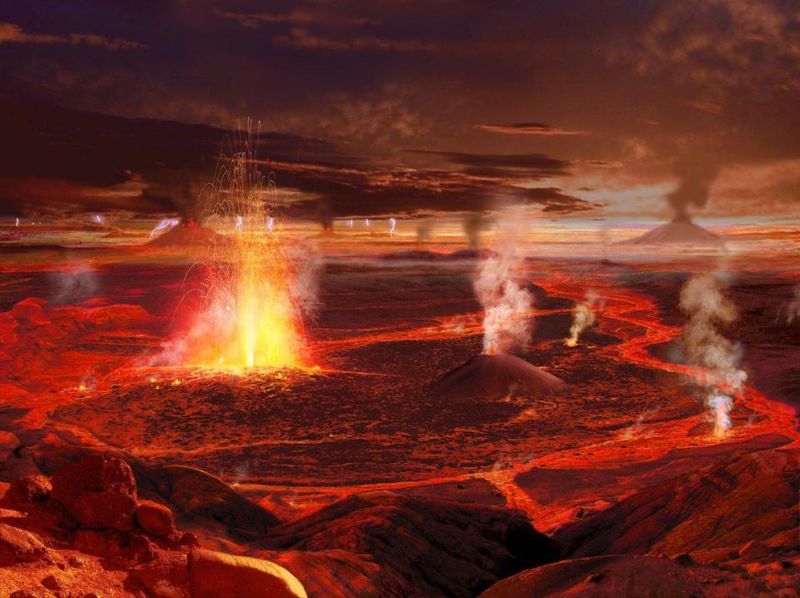Deep beneath our feet, thousands of miles below the surface, scientists have discovered enormous mysterious structures lurking in Earth’s mantle. These gigantic formations, nicknamed “blobs,” have puzzled researchers for decades, but new studies are finally revealing their explosive secrets. Recent breakthroughs show these ancient masses might control where massive volcanic eruptions happen and could even be leftovers from a planet-sized collision billions of years ago.
Ancient Collision Leftovers Shape Earth’s Interior
Around 4.5 billion years ago, a Mars-sized planet called Theia slammed into early Earth in a catastrophic collision. This violent impact didn’t just create our Moon—it left behind dense, iron-rich chunks that sank deep into Earth’s interior. Over billions of years, this ancient planetary material settled at the bottom of the mantle, forming two continent-sized blobs beneath Africa and the Pacific Ocean.
Scientists call these structures Large Low-Velocity Provinces, or LLVPs, because seismic waves slow down dramatically when passing through them. Their unusual density and composition make them stand out from surrounding rock. Understanding these remnants helps researchers piece together Earth’s violent birth story and how our planet developed its unique internal structure over time.
Magma Highways Connect Deep Earth to Surface Volcanoes
Picture enormous heat plumes rising like underwater smoke columns from these deep blobs all the way to Earth’s surface. New computer simulations reveal that the mysterious blobs act as launching pads for these hot rock streams, creating what scientists now call “magma highways.” When researchers mapped past giant volcanic eruptions over the last billion years, they found something remarkable: many lined up almost perfectly with locations above or near these deep structures.
Here’s where it gets interesting—the plumes don’t rise straight up. As they travel thousands of miles through shifting mantle rock, convection forces tilt them sideways. That means a massive eruption might appear hundreds of miles away from the blob directly beneath it. This discovery helps explain why certain regions experience repeated volcanic activity throughout Earth’s history.
Blobs Move and Migrate Over Geologic Time
For years, scientists assumed these massive blobs stayed put in fixed positions. Wrong! Recent modeling shows they actually creep through the mantle over millions of years, pushed along by the same convection forces that drive plate tectonics. Think of them like ultra-slow icebergs drifting through thick syrup.
This mobility changes everything about how we understand volcanic patterns. Researchers tested different models of blob positions throughout Earth’s history and discovered that accounting for their movement dramatically improved predictions of where ancient eruptions occurred. One particular model matched the geographic spread of numerous past large igneous provinces when scientists factored in both plume tilting and blob migration.
This breakthrough means the blobs’ influence on volcanism shifts across continents over deep time.
Implications for Earth’s Volcanic History and Future Research
What does knowing about these blobs actually tell us? Plenty. By connecting deep Earth structures to surface eruptions, geoscientists can better interpret catastrophic volcanic events from Earth’s past—including massive flood basalts that may have triggered mass extinctions and climate shifts. However, don’t expect eruption predictions anytime soon. These processes unfold over millions of years, not human lifetimes.
Not every eruption fits the blob pattern either, and many mysteries remain unsolved. Scientists still debate the exact chemical makeup of these structures and how upper mantle conditions affect whether plumes actually break through to the surface.
Future research will focus on sharper seismic imaging and more realistic computer models to unlock Earth’s deepest secrets.
